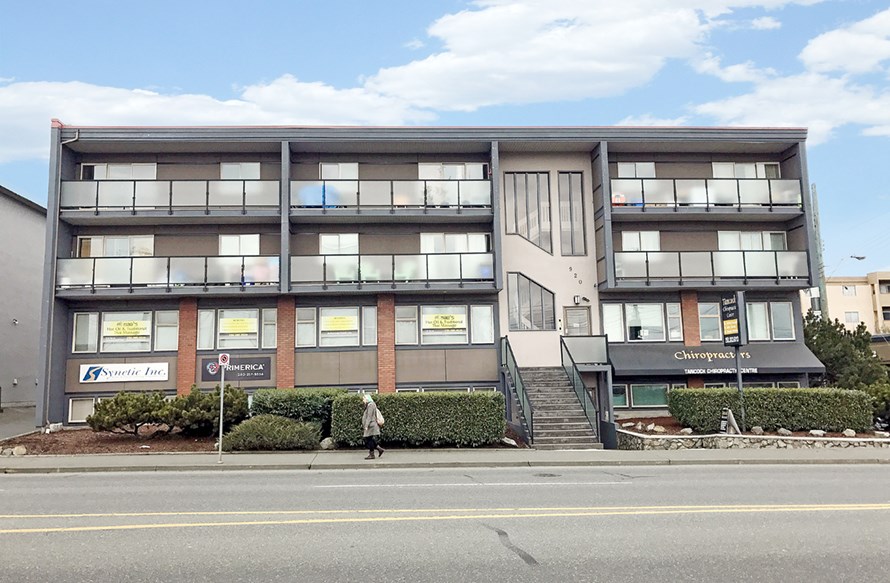Victoria’s multi-family market is poised to entice landlords for the foreseeable future, following a summer of record home starts in the region and a vacancy rate of less than 1 per cent.
Canada Mortgage and Housing Corp. forecasts the region’s 0.7 per cent vacancy rate to remain tight throughout 2018.
More than 2,000 rental units are currently under construction and are expected to hit the market this year and into 2019, with more than 5,000 in the pipeline or development process. New supply is expected to edge up vacancy rates only moderately, however.
Nearby Langford is having its own rental-housing boom, according to developer DB Services Victoria. More than 900 units were started in the municipality during the first eight months of the year. Rental housing projects in the city are lined up for the next five years – so much so that DB says it’s had to turn away new project proposals. Building permits in Greater Victoria have grown nearly 30 per cent month-over-month.
DB Services is currently constructing three rental projects in the region, including the 93-unit The Arc on Hockley Avenue, Brock Commons student residence and the 90-unit Danbrook One on Claude Road.
Meanwhile, implementation of recommendations from a new Rental Housing Task Force by the BC NDP government could limit a landlord’s ability to increase rents when a tenant vacates, cautions LandlordBC.
As well, a proposed new Victoria bylaw requiring 10 per cent to 15 per cent of all new condo projects to classify as affordable units may present developers and landlords with new challenges. An estimated 6,200 affordable housing units are needed to satisfy demand, according to a report from Colliers International’s Victoria office. A healthy share of condos end up on the rental market.
“We want to make sure that [the bylaw] doesn’t stop developers from building condos,” Kathy Hogan, executive director of the Urban Development Institute (UDI) capital region branch, told the Times Colonist. “If the policy is too stringent, then it could have negative connotations on that.”
Hogan is calling for more consultation on the City of Victoria policy introduced in September, which would require strata developments of 40 or more units in the city core to have 15 per cent be classified as affordable. Developers with projects under 40 units would be able to make a cash contribution in lieu of the affordable units.
Victoria city council is also considering instating a size minimum for all affordable housing built in the city’s downtown core. The city currently imposes a minimum size of only 355.2 square feet in multi-use projects outside of downtown. The Victoria Downtown Residents Association would like to see a limit enacted to curb the influx of micro-units cropping up of late. The UDI is worried about this idea as well.
“This type of requirement will limit the ability of developers to bring a diverse housing supply to market and limit the ability of developers to respond to market conditions,” Hogan said in a letter to council.
But if sales volumes are any indication, developers should still bet on Victoria multi-family projects. Sales for rental apartment buildings in 2017 hit $146 million, up from $127 million the year before.
Per-suite value was placed at $215,132 in 2017, but current prices in the core can easily top $300,000. The majority of apartment building transactions are in the $1 million to $3 million range, according to a report by Colliers International. Sales of rental buildings valued at more than $1 million reached $25.8 million in the second quarter.
Average monthly rents in the city are $1,000 for one-bedroom suites and close to $1,300 for two-bedroom apartments.
Rental demand is expected to increase with the ongoing influx of young tech professionals moving to Victoria, pushing its unemployment rate well below the national average of 5.8 per cent. Unemployment in the city is just 4.2 per cent, the lowest across Canada, bolstered in part by three major post-secondary institutions – University of Victoria, Royal Roads University and Camosun College – and provincial government and other public-sector employment.
In the second quarter of 2018, two major real estate investment trust sales are estimated to exceed 2017’s half-year sales volume total of $108 million. Both transactions were new purpose-built rental apartment buildings, one on Yates Street in Victoria and a development in Langford.
- with files from Times Colonist



